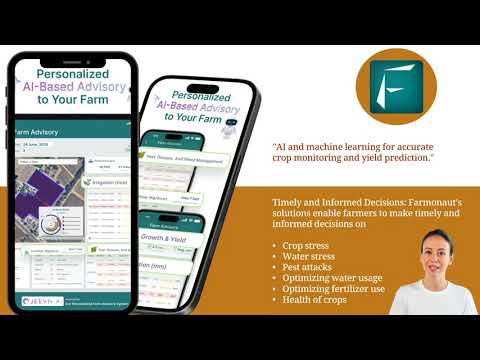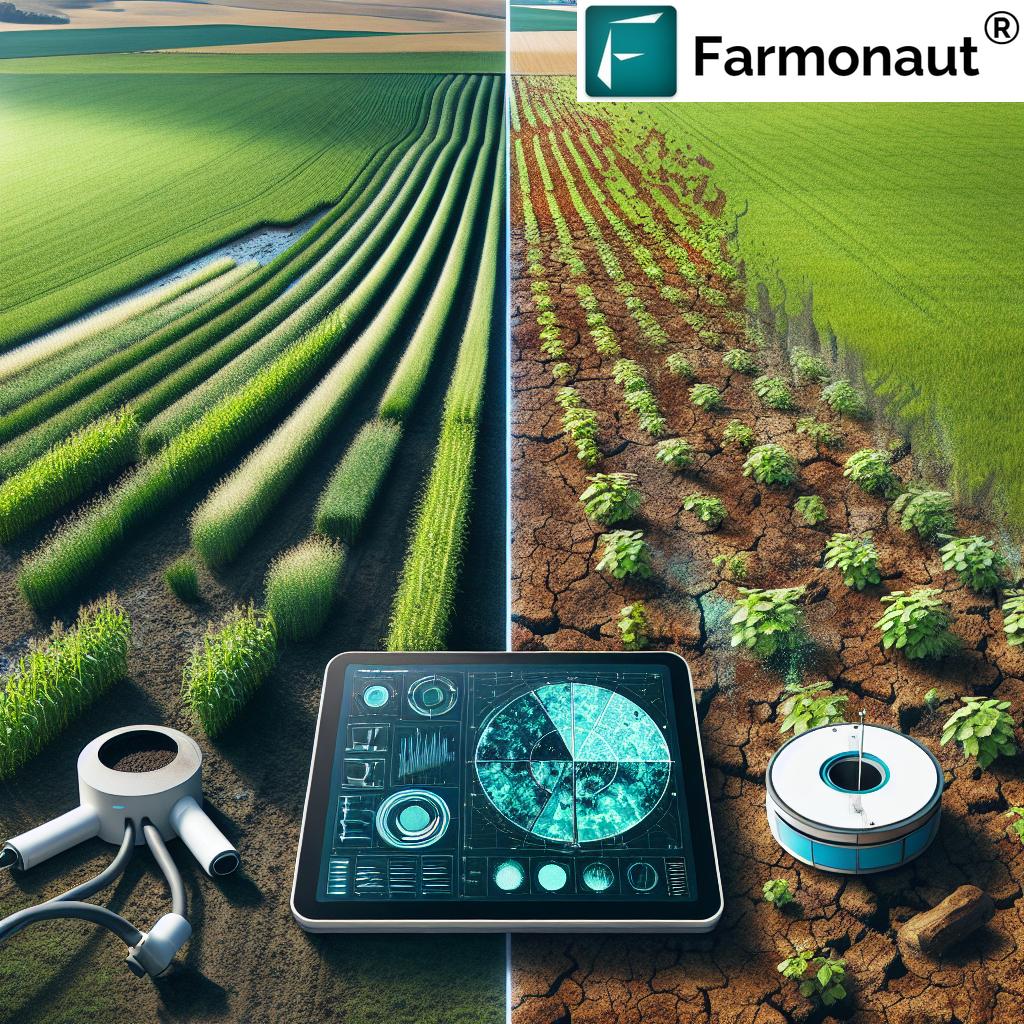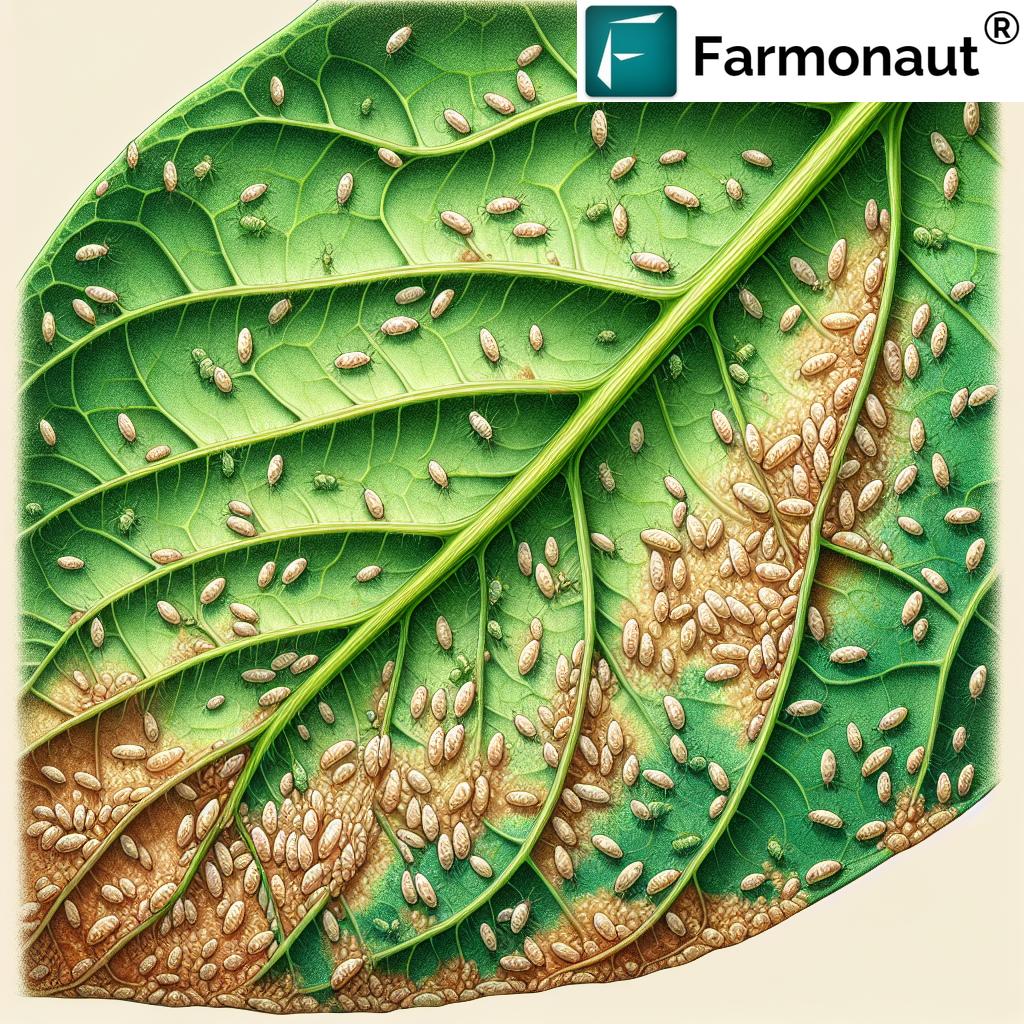Maximizing Sorghum Yields: A Comprehensive Guide to Growth Stages and Precision Agriculture Techniques
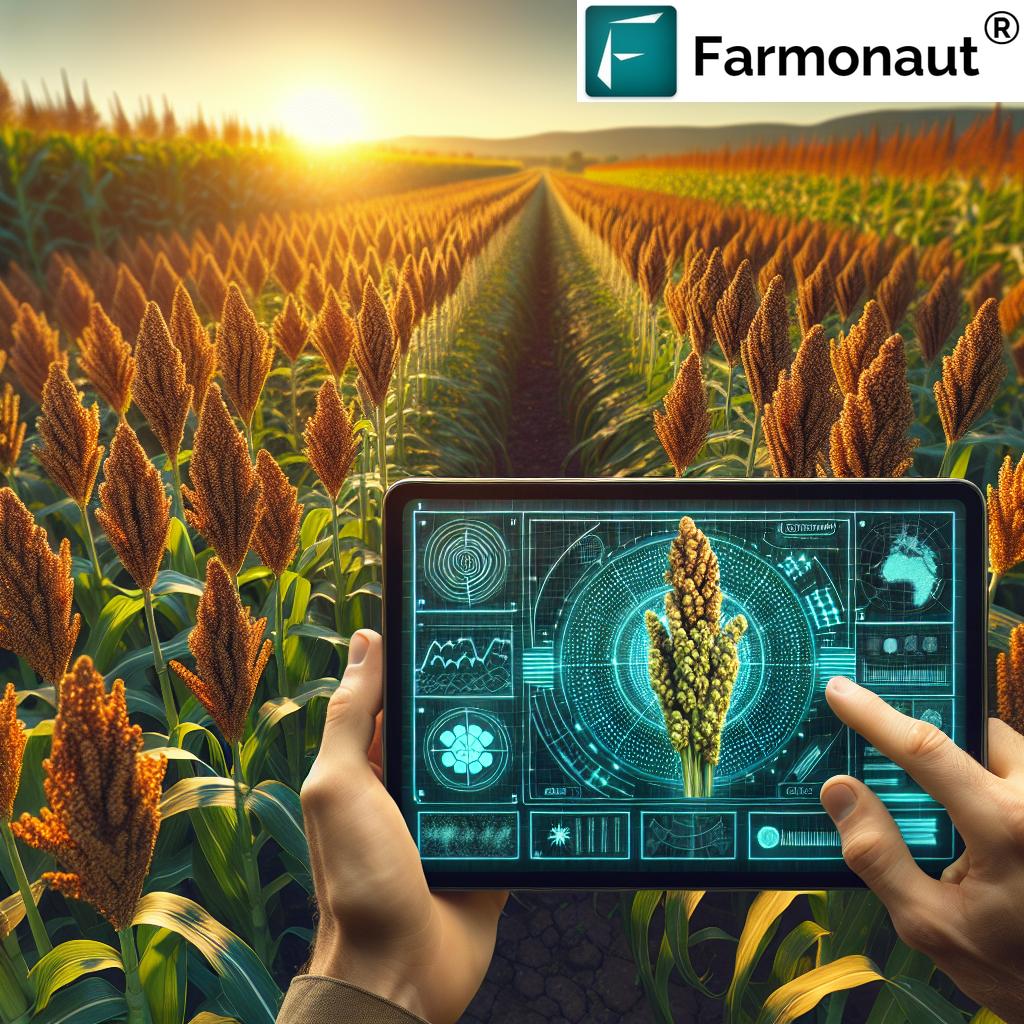
“Sorghum can thrive in temperatures up to 100°F (38°C), making it one of the most heat-tolerant cereal crops.”
Welcome to our comprehensive guide on maximizing sorghum yields through effective growth management and precision agriculture techniques. As we delve into the world of sorghum cultivation, we’ll explore essential strategies to boost your crop’s potential, from optimal sowing conditions to harvest best practices. Whether you’re a seasoned farmer or new to sorghum production, this guide will provide you with valuable insights to enhance your agronomic approach and take your farming to the next level.
Sorghum, a resilient and versatile crop, has gained significant attention in recent years due to its drought-resistant properties and diverse applications. As climate change continues to pose challenges to agriculture, understanding and optimizing sorghum cultivation techniques becomes increasingly crucial. In this blog post, we’ll cover key growth stages, soil preparation, fertilization strategies, pest management, and irrigation methods tailored specifically for sorghum’s unique needs.
Moreover, we’ll explore how precision agriculture and crop monitoring technology, such as those offered by Farmonaut, can revolutionize your sorghum production. By leveraging cutting-edge geospatial intelligence tools, you can gain unprecedented insights into your fields, allowing for more informed decision-making and improved yields.
Understanding Sorghum: A Drought-Resistant Powerhouse
Before we dive into the specifics of sorghum cultivation techniques, let’s take a moment to appreciate what makes this crop so special. Sorghum (Sorghum bicolor) is a cereal grain that belongs to the grass family. Known for its exceptional drought tolerance and ability to thrive in challenging environments, sorghum has become a staple crop in many parts of the world, particularly in arid and semi-arid regions.
- Adaptability: Sorghum can grow in a wide range of soil types and climatic conditions.
- Water Efficiency: It requires less water compared to other cereal crops, making it an excellent choice for water-scarce areas.
- Nutritional Value: Sorghum is rich in nutrients, including protein, fiber, and various minerals.
- Versatility: It can be used for human consumption, animal feed, and even biofuel production.
Now that we understand the importance of sorghum, let’s explore how we can maximize its potential through proper growth management and precision agriculture techniques.
Sorghum Growth Stages: A Comprehensive Overview
To effectively manage sorghum crops, it’s crucial to understand the various growth stages and their specific requirements. Let’s break down the life cycle of sorghum into key phases:
- Germination and Emergence (0-10 days after planting)
- Vegetative Stage (10-30 days after planting)
- Boot Stage (30-60 days after planting)
- Flowering and Pollination (60-70 days after planting)
- Grain Fill and Maturity (70-120 days after planting)
Each of these stages requires specific management practices to ensure optimal growth and development. Let’s explore them in detail:
1. Germination and Emergence
During this critical phase, sorghum seeds absorb moisture and begin to sprout. Proper soil preparation and optimal sowing conditions are essential for successful germination.
- Soil Temperature: Aim for soil temperatures above 60°F (15°C) for optimal germination.
- Seed Depth: Plant seeds at a depth of 1-2 inches (2.5-5 cm), depending on soil moisture conditions.
- Seed Treatment: Consider using fungicide-treated seeds to protect against soil-borne diseases.
Precision Agriculture Tip: Utilize Farmonaut’s satellite-based soil moisture monitoring to ensure optimal planting conditions. 
2. Vegetative Stage
As the sorghum plant develops its root system and initial leaves, proper nutrition and weed management become crucial.
- Fertilization: Apply a starter fertilizer rich in phosphorus to promote root development.
- Weed Control: Implement early weed control measures to reduce competition for resources.
- Irrigation: Ensure adequate soil moisture to support rapid vegetative growth.
Monitoring Tip: Use Farmonaut’s vegetation health indices (NDVI) to track crop development and identify potential issues early on.
3. Boot Stage
The boot stage marks the transition from vegetative growth to reproductive development. During this phase, the plant’s energy focuses on panicle formation.
- Nitrogen Application: Consider a side-dress nitrogen application to support panicle development.
- Pest Monitoring: Regularly scout for pests, particularly sorghum midge and headworms.
- Water Management: Maintain consistent soil moisture to prevent stress during this critical stage.
Precision Agriculture Insight: Leverage Farmonaut’s AI-driven advisory system for personalized recommendations on nutrient management and pest control strategies.
4. Flowering and Pollination
This stage is crucial for determining grain yield potential. Proper management during flowering can significantly impact final yields.
- Moisture Management: Ensure adequate soil moisture to support pollen viability and fertilization.
- Temperature Considerations: Be aware that extreme temperatures can affect pollination success.
- Pest Control: Continue monitoring for pests that may damage developing grain heads.
Weather Monitoring: Utilize Farmonaut’s weather forecasting tools to anticipate and mitigate potential climate-related risks during this sensitive period.
5. Grain Fill and Maturity
As the sorghum plant enters its final growth stage, focus shifts to supporting grain development and preparing for harvest.
- Irrigation Management: Gradually reduce irrigation to promote grain drying and maturity.
- Disease Monitoring: Watch for late-season diseases that may affect grain quality.
- Harvest Preparation: Monitor grain moisture content to determine the optimal harvest time.
Yield Estimation: Employ Farmonaut’s satellite-based yield prediction tools to forecast harvest potential and plan accordingly.
Precision Agriculture Techniques for Sorghum Cultivation
“Precision agriculture techniques can increase sorghum yields by up to 25% through optimized resource management and targeted interventions.”
Embracing precision agriculture can significantly enhance sorghum production by optimizing resource use and enabling data-driven decision-making. Here’s how you can leverage advanced technologies to maximize your sorghum yields:
1. Satellite-Based Crop Monitoring
Farmonaut’s satellite imagery analysis provides valuable insights into crop health, allowing for timely interventions and targeted management practices.
- Vegetation Indices: Monitor NDVI (Normalized Difference Vegetation Index) to assess crop vigor and identify potential stress areas.
- Soil Moisture Mapping: Optimize irrigation practices by tracking soil moisture levels across your fields.
- Yield Prediction: Utilize AI-driven yield forecasting to make informed decisions on harvest timing and marketing strategies.
Farmonaut Feature: Access real-time satellite imagery and analytics through the Farmonaut mobile app. 

2. Variable Rate Technology (VRT)
Implement VRT to optimize input application based on field variability, ensuring efficient resource use and maximizing crop performance.
- Fertilizer Application: Adjust fertilizer rates based on soil nutrient maps and crop needs.
- Seeding Rates: Vary seeding density according to soil productivity zones.
- Pesticide Application: Target pest hotspots with precision, reducing chemical use and environmental impact.
Integration Tip: Combine Farmonaut’s field analytics with VRT equipment for highly precise and efficient input management.
3. Smart Irrigation Systems
Optimize water use efficiency through advanced irrigation management techniques:
- Soil Moisture Sensors: Install sensors to monitor real-time soil moisture levels and inform irrigation decisions.
- Weather-Based Scheduling: Integrate local weather forecasts to adjust irrigation timing and amounts.
- Deficit Irrigation Strategies: Implement controlled stress during specific growth stages to improve water use efficiency without significantly impacting yields.
Farmonaut Integration: Use Farmonaut’s weather forecasting and soil moisture data to fine-tune your irrigation strategies for optimal water management.
4. Drone Technology for Scouting and Mapping
Enhance your field monitoring capabilities with drone technology:
- High-Resolution Imagery: Capture detailed images of your sorghum fields for early detection of pest infestations, diseases, or nutrient deficiencies.
- Thermal Imaging: Identify water stress and irrigation issues using thermal cameras.
- 3D Field Mapping: Create accurate topographical maps for improved drainage and land management.
Data Integration: Combine drone-captured data with Farmonaut’s satellite imagery for comprehensive field analysis and decision support.
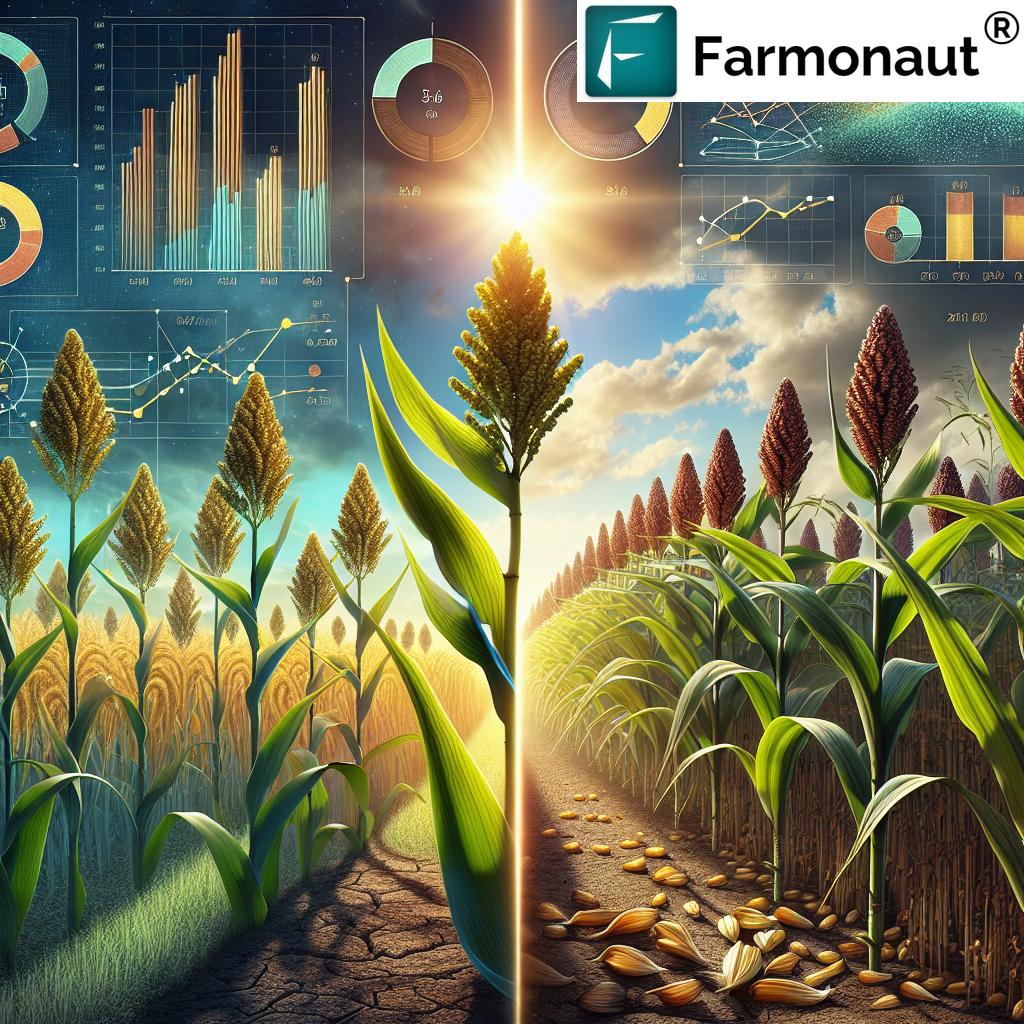
Sustainable Sorghum Production Practices
As we strive to maximize sorghum yields, it’s crucial to consider the long-term sustainability of our farming practices. Here are some key strategies for environmentally responsible sorghum cultivation:
1. Conservation Tillage
Implement reduced or no-till practices to improve soil health and reduce erosion:
- Residue Management: Leave crop residues on the field to protect soil and improve organic matter content.
- Minimize Soil Disturbance: Reduce tillage operations to preserve soil structure and beneficial microorganisms.
- Cover Cropping: Plant cover crops between sorghum seasons to prevent soil erosion and enhance nutrient cycling.
Monitoring Tip: Use Farmonaut’s soil moisture and vegetation health monitoring to assess the impact of conservation tillage practices on your fields.
2. Integrated Pest Management (IPM)
Adopt a holistic approach to pest control that minimizes environmental impact:
- Biological Control: Encourage natural predators of sorghum pests through habitat management.
- Cultural Practices: Implement crop rotation and adjust planting dates to disrupt pest life cycles.
- Targeted Chemical Use: Apply pesticides only when necessary, based on economic thresholds and pest population monitoring.
Precision Agriculture Application: Leverage Farmonaut’s pest prediction models and field monitoring tools to implement timely and targeted IPM strategies.
3. Nutrient Management
Optimize fertilizer use to maximize yields while minimizing environmental impact:
- Soil Testing: Conduct regular soil tests to determine nutrient needs accurately.
- Split Applications: Apply fertilizers in multiple smaller doses to improve uptake efficiency and reduce leaching.
- Organic Amendments: Incorporate organic matter sources like compost or manure to improve soil health and nutrient availability.
Farmonaut Feature: Utilize Farmonaut’s AI-driven nutrient management recommendations to optimize fertilizer applications based on crop needs and environmental conditions.
4. Water Conservation
Implement water-saving techniques to improve water use efficiency in sorghum production:
- Efficient Irrigation Systems: Invest in drip or precision sprinkler systems to minimize water waste.
- Mulching: Apply organic mulch to reduce soil evaporation and conserve moisture.
- Rainwater Harvesting: Implement catchment systems to collect and store rainwater for irrigation during dry periods.
Monitoring Tool: Use Farmonaut’s soil moisture tracking and weather forecasting features to optimize irrigation scheduling and improve water use efficiency.
Sorghum Yield Optimization: Putting It All Together
Now that we’ve explored the various aspects of sorghum cultivation and precision agriculture techniques, let’s summarize the key strategies for maximizing your sorghum yields:
- Understand Growth Stages: Tailor your management practices to the specific needs of each sorghum growth stage.
- Leverage Precision Agriculture: Utilize tools like Farmonaut’s satellite-based crop monitoring to make data-driven decisions.
- Optimize Resource Use: Implement variable rate technology for efficient application of inputs like fertilizers and water.
- Embrace Sustainable Practices: Adopt conservation tillage, IPM, and water-saving techniques for long-term soil health and environmental stewardship.
- Monitor and Adapt: Regularly assess crop health, soil conditions, and environmental factors to make timely adjustments to your management strategies.
By integrating these approaches and leveraging advanced technologies, you can significantly enhance your sorghum production while promoting sustainable farming practices.
Recommended Table: Sorghum Growth Stages and Management Practices
| Growth Stage | Days After Planting | Plant Characteristics | Management Practices |
|---|---|---|---|
| Emergence | 0-10 | Coleoptile emerges, first leaf appears |
– Ensure proper seed-to-soil contact – Monitor for seedling pests – Apply starter fertilizer if needed |
| Vegetative | 10-30 | Rapid leaf development, tillering begins |
– Implement early weed control – Monitor soil moisture – Scout for foliar pests and diseases |
| Boot | 30-60 | Flag leaf emerges, panicle develops within leaf sheath |
– Apply side-dress nitrogen – Manage water stress – Monitor for sorghum midge |
| Flowering | 60-70 | Panicle emerges, flowering occurs from top to bottom |
– Ensure adequate soil moisture – Control headworms if present – Avoid spraying during pollination |
| Grain Filling | 70-120 | Grain development, physiological maturity reached |
– Gradual reduction in irrigation – Monitor for late-season diseases – Prepare for harvest |
This table serves as a quick reference guide for aligning your management practices with the specific needs of sorghum at each growth stage. By following these guidelines and integrating precision agriculture tools like Farmonaut’s crop monitoring system, you can optimize your sorghum production and achieve maximum yields.
Leveraging Farmonaut’s Technology for Sorghum Production
To further enhance your sorghum cultivation efforts, consider integrating Farmonaut’s advanced agricultural technologies into your management practices:
- Satellite-Based Crop Monitoring: Access real-time vegetation health indices (NDVI) to track sorghum growth and identify potential issues early.
- AI-Powered Advisory System: Receive personalized recommendations for nutrient management, pest control, and irrigation based on your specific field conditions.
- Weather Forecasting: Make informed decisions about planting, fertilization, and harvesting with accurate, field-specific weather predictions.
- Yield Prediction: Utilize machine learning algorithms to forecast sorghum yields, helping you plan for harvest and marketing.
- Field Boundary Mapping: Accurately map and manage your sorghum fields for precise input application and yield analysis.
By leveraging these tools, you can take a data-driven approach to sorghum cultivation, optimizing resource use and maximizing yields while promoting sustainable farming practices.
Get Started with Farmonaut: Explore our range of precision agriculture solutions tailored for sorghum producers. Try Farmonaut Today
Conclusion: Embracing the Future of Sorghum Cultivation
As we’ve explored throughout this comprehensive guide, maximizing sorghum yields requires a multifaceted approach that combines traditional agronomic knowledge with cutting-edge precision agriculture techniques. By understanding the unique needs of sorghum at each growth stage and leveraging advanced technologies like those offered by Farmonaut, farmers can optimize their production practices, increase yields, and promote sustainable agriculture.
Remember, successful sorghum cultivation is an ongoing process of learning, adapting, and refining your strategies. Stay informed about the latest research and technological advancements in sorghum production, and don’t hesitate to experiment with new techniques on a small scale before implementing them across your entire operation.
By embracing precision agriculture and sustainable farming practices, you’re not only maximizing your sorghum yields but also contributing to a more resilient and environmentally responsible agricultural sector. As you implement these strategies, keep in mind that Farmonaut’s suite of tools is here to support you every step of the way, providing valuable insights and data-driven recommendations to help you achieve your production goals.
We encourage you to explore Farmonaut’s precision agriculture solutions and see how they can transform your sorghum cultivation practices. Together, we can build a more productive, sustainable, and prosperous future for sorghum farming.
FAQs about Maximizing Sorghum Yields
- Q: What is the optimal planting depth for sorghum seeds?
A: The ideal planting depth for sorghum is typically 1-2 inches (2.5-5 cm), depending on soil moisture conditions. Planting too deep can result in poor emergence, while shallow planting may lead to inadequate root development. - Q: How often should I irrigate my sorghum crop?
A: Irrigation frequency depends on various factors, including soil type, climate, and growth stage. Generally, sorghum requires about 1-1.5 inches of water per week during critical growth stages. Use soil moisture sensors and Farmonaut’s soil moisture monitoring tools to optimize irrigation scheduling. - Q: What are the most common pests affecting sorghum, and how can I manage them?
A: Common sorghum pests include sorghum midge, headworms, and aphids. Implement an Integrated Pest Management (IPM) approach, using cultural practices, biological controls, and targeted chemical applications when necessary. Farmonaut’s pest prediction models can help you anticipate and manage pest pressures effectively. - Q: How can precision agriculture techniques improve my sorghum yields?
A: Precision agriculture can enhance sorghum yields by optimizing resource use, enabling targeted interventions, and providing data-driven insights. Technologies like satellite-based crop monitoring, variable rate application, and AI-powered advisory systems help farmers make informed decisions and address field variability efficiently. - Q: What are the key factors to consider when choosing sorghum hybrids?
A: When selecting sorghum hybrids, consider factors such as maturity group, yield potential, disease resistance, drought tolerance, and end-use requirements. Consult with local agronomists and use data from regional variety trials to make informed decisions based on your specific growing conditions and production goals.
Explore Farmonaut’s Precision Agriculture Solutions
Ready to take your sorghum production to the next level? Discover how Farmonaut’s advanced agricultural technologies can help you maximize yields, optimize resource use, and make data-driven decisions. Our suite of tools is designed to support farmers at every stage of the growing season, from planting to harvest.
Explore our offerings and find the perfect solution for your farm:
- Satellite-Based Crop Monitoring: Try Our Web App
- Mobile Field Management: Download our apps for Android or iOS
- API Integration: Explore Our API
- Developer Resources: API Documentation
Join the growing community of farmers leveraging Farmonaut’s technology to achieve sustainable and profitable sorghum production. Let’s work together to cultivate success, one field at a time.



